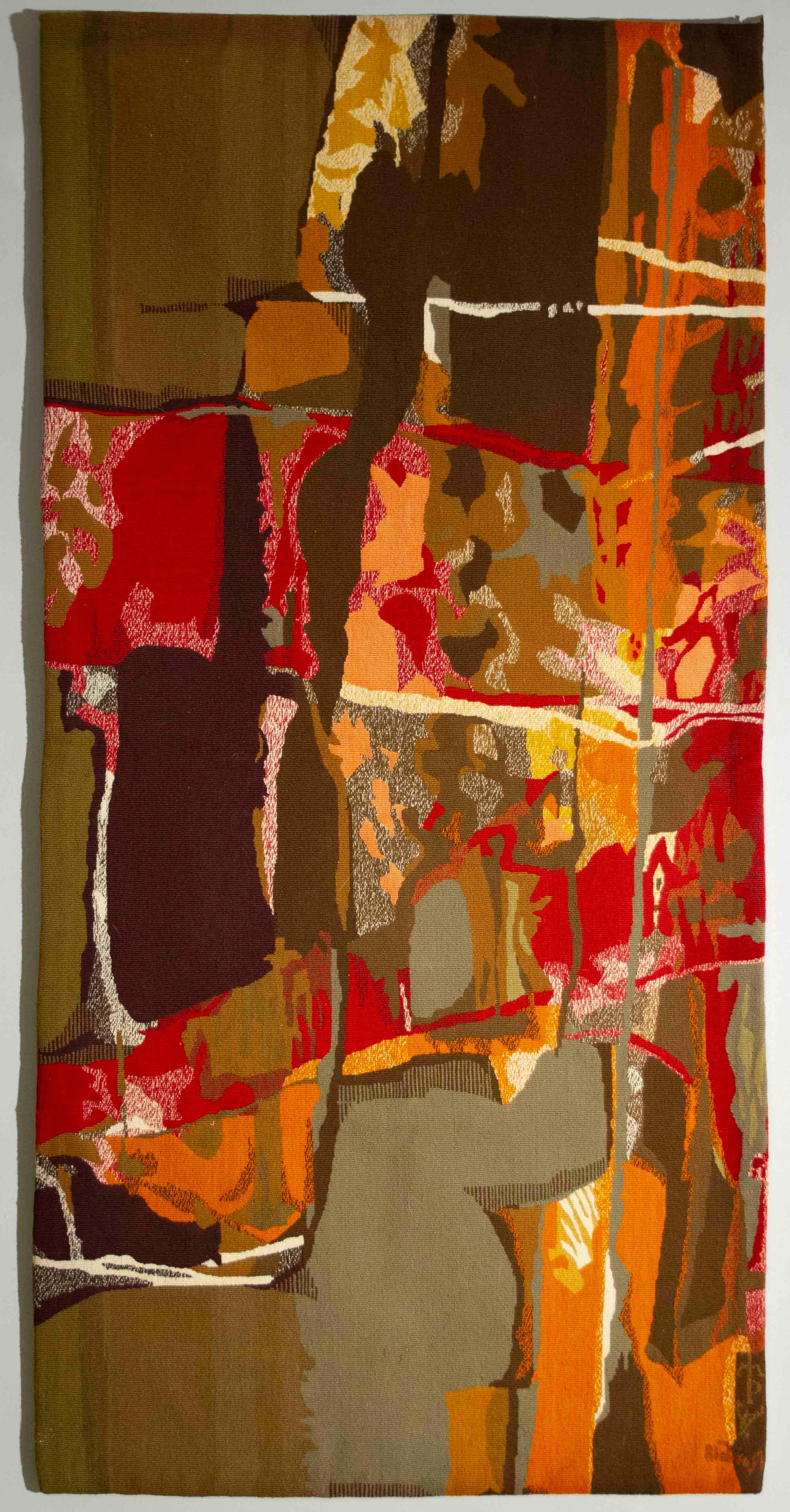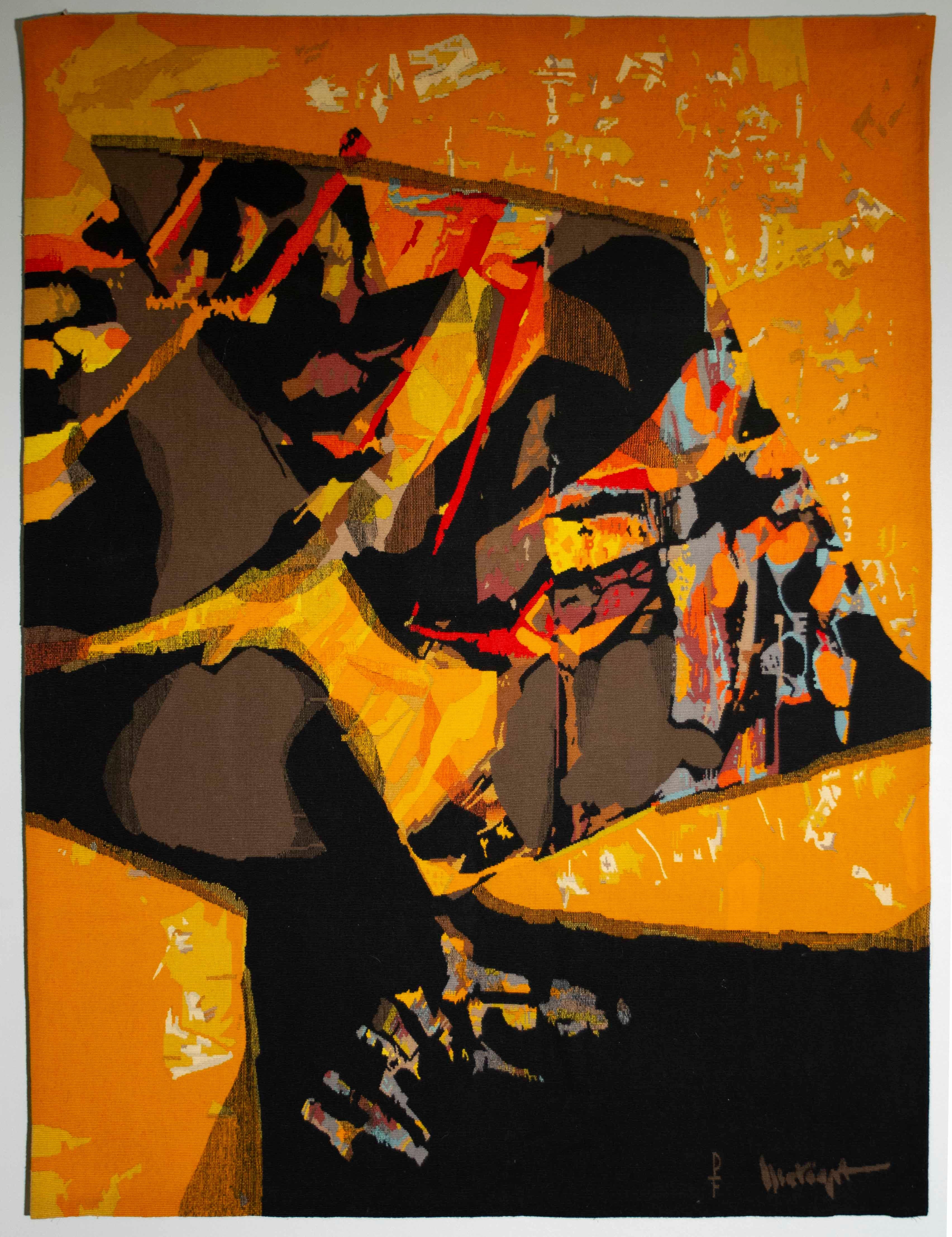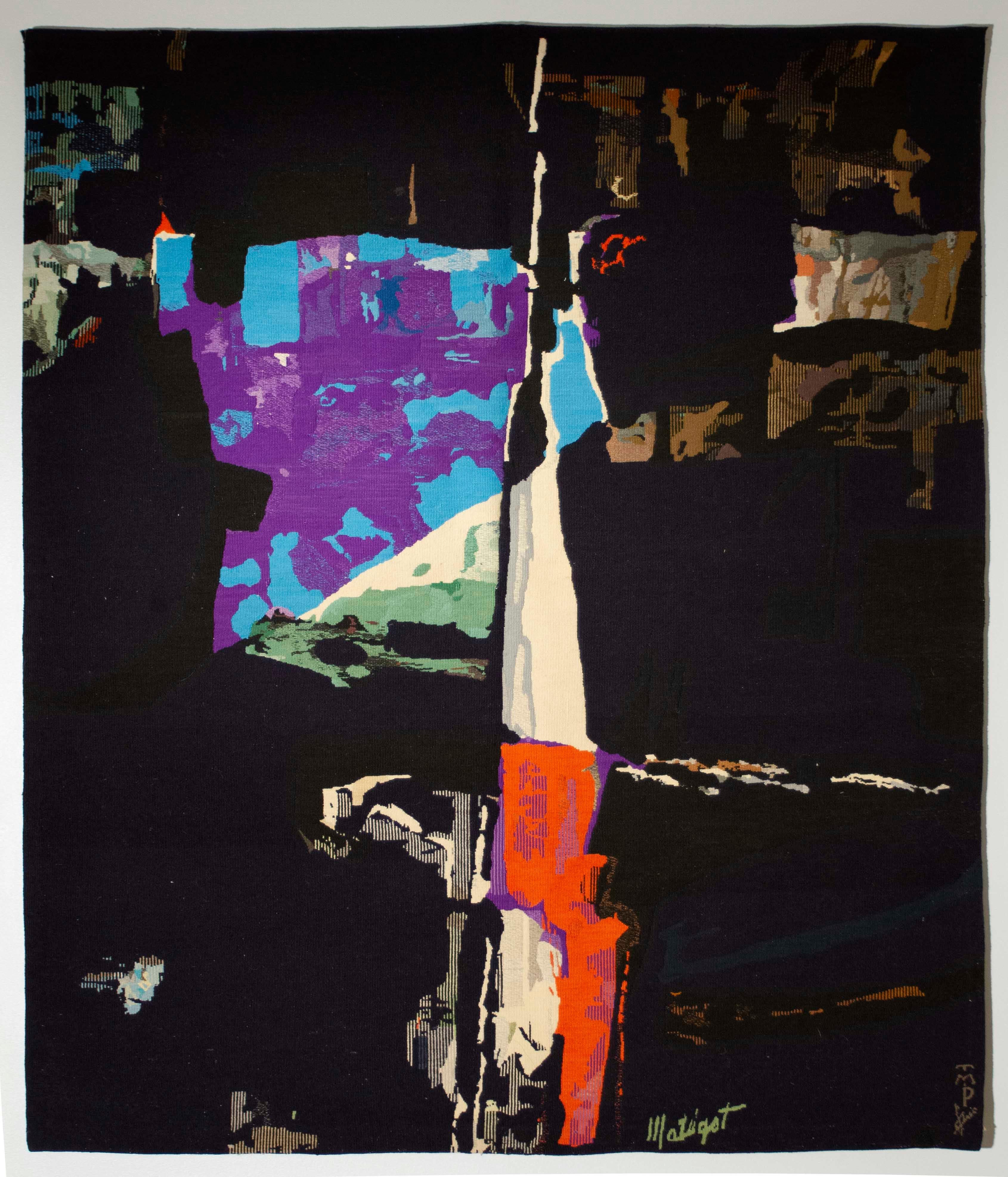Items Similar to Framed Mid 20th Century Embroidery - Flora
Want more images or videos?
Request additional images or videos from the seller
1 of 6
UnknownFramed Mid 20th Century Embroidery - FloraUnknown
Unknown
About the Item
Curvaceous art nouveau flowers have been carefully embroidered with colour threat to complete is lavish botanical motif. A mix of stitching patterns have been used by the artist to bring to life each floral element. Unsigned. The sample has been well presented in an attractive gilt slip and reeded wood frame. On linen.
- Creation Year:Unknown
- Dimensions:Height: 24.61 in (62.5 cm)Width: 20.67 in (52.5 cm)
- Medium:
- Period:
- Condition:The embroidery itself is in a very good condition for its age. The gilt slip is showing some signs of wear with a crack to the lower left corner and marks on most sides. The wooden reeded frame is in fine condition.
- Gallery Location:Corsham, GB
- Reference Number:
About the Seller
4.9
Platinum Seller
These expertly vetted sellers are 1stDibs' most experienced sellers and are rated highest by our customers.
Established in 2010
1stDibs seller since 2018
881 sales on 1stDibs
Typical response time: 4 hours
- ShippingRetrieving quote...Ships From: Corsham, United Kingdom
- Return PolicyA return for this item may be initiated within 30 days of delivery.
More From This SellerView All
- Late 19th Century Embroidery - A Timeless LoveLocated in Corsham, GBA charming petit point needlework from the late 19th Century, showing a heartwarming scene of an elderly couple sitting in a close embrace in their home with the cat and dog at their...Category
19th Century More Art
MaterialsTapestry
- 19th Century Embroidery - Flight into EgyptLocated in Corsham, GBA charming needlepoint picture depicting Mary And Joseph fleeing with the baby Christ to Egypt to escape King Herod. On cotton on stretchers .Category
19th Century More Art
MaterialsTapestry
- Early 20th Century Embroidery - Flowers and LeavesLocated in Corsham, GBA large work of embroidery depicting flowers and their leaves. Presented glazed in a wooden frame with twisted rope detailing and a gilt-effect inner edge. Unsigned.Category
20th Century More Art
MaterialsTapestry
- Leah Young - Framed George IV SamplerLocated in Corsham, GBA beautiful George VI sampler, hand embroidered by Leah Young in 1827. Cases of the alphabet, birds and heart motifs have all been created from open stitch, cross stitch, and stem st...Category
Early 19th Century More Art
MaterialsTapestry
- Early 20th Century Embroidery - Church and CottageLocated in Corsham, GBA delightful work of silk embroidery depicting a village scene with a church and cottage surrounded by elaborate flowers. Presented glazed in a white card mount and a wooden frame wi...Category
20th Century More Art
MaterialsTapestry
- 20th Century Embroidery - Peacocks And PeoniesLocated in Corsham, GBAn exquisite 20th Century embroidery using the most beautiful silk threads. The colours of the threads a wonderfully bright and the flat, directional stitches give the embroidery mov...Category
21st Century and Contemporary More Art
MaterialsTapestry
You May Also Like
- Artichoke, Large Tapestry by Charles ChamotBy Charles ChamotLocated in Long Island City, NYArtist: Charles Chamot Title: Artichoke Year: 1979 Medium: Woven Wool Tapestry, signed and numbered on label, verso Edition: 1/6 Size: 84 x 72 inchesCategory
1970s Modern More Art
MaterialsTapestry, Wool
- Mathieu Matégot - Sans titre, tapestry, french, modern, abstract, wool, designBy Mathieu MatégotLocated in London, GBMathieu Matégot (1910-2001) Sans titre c.1950s wool tapestry, Manufactura de Tapeçarias de Portalegre 150 x 70 cm signed ‘Matégot’ and with the Manufactura de Tapeçarias de Portalegre monogram (lower right) Price: $11,000 USD Provenance: Barry Friedman Ltd, New York (stock no. BF21324) Notes: Mathieu Matégot was a Hungarian-born French designer, architect and artist. After studying at Budapest's School of Fine Arts in 1929, Matégot travelled across Italy and the USA until settling in Paris in 1931 where he worked as a set designer, window dresser and tapestry maker. Matégot volunteered for the French resistance at the start of the Second World War, only to be captured by the Nazis. A dreadful fate for most, however, it was during his time as a prisoner of war that the artist discovered metalworking techniques (such as Rigitulle) which he later patented and became renowned for. Upon his release, Matégot was awarded French citizenship. After the war, the artist's interest in tapestry was renewed after being introduced to contemporary tapestry revivalist, Jean Lurçat. However, in order to make ends meet, Matégot pursued furniture design; he established a workshop in Paris and dedicated his time to translating the groundbreaking metal techniques into popular handcrafted objects. In 1959, Matégot abandoned furniture design and focused exclusively on his passion for abstract tapestries. He continued his work as a pioneer of French Modern tapestry...Category
1950s Abstract More Art
MaterialsTapestry
- Mathieu Matégot - Castille, tapestry, french, modern, abstract, aubusson, designBy Mathieu MatégotLocated in London, GBMathieu Matégot (1910-2001) Castille c.1950s Aubusson tapestry, Pinton Frères; (probably) unique 156 x 120 cm signed ‘Matégot’ and with the Pinton Frères monogram (lower right); titled, inscribed, numbered and signed (workshop label on the verso) Price: $14,000 USD Provenance: Barry Friedman Ltd, New York (stock no. BF11410) Notes: Mathieu Matégot was a Hungarian-born French designer, architect and artist. After studying at Budapest's School of Fine Arts in 1929, Matégot travelled across Italy and the USA until settling in Paris in 1931 where he worked as a set designer, window dresser and tapestry maker. Matégot volunteered for the French resistance at the start of the Second World War, only to be captured by the Nazis. A dreadful fate for most, however, it was during his time as a prisoner of war that the artist discovered metalworking techniques (such as Rigitulle) which he later patented and became renowned for. Upon his release, Matégot was awarded French citizenship. After the war, the artist's interest in tapestry was renewed after being introduced to contemporary tapestry revivalist, Jean Lurçat. However, in order to make ends meet, Matégot pursued furniture design; he established a workshop in Paris and dedicated his time to translating the groundbreaking metal techniques into popular handcrafted objects. In 1959, Matégot abandoned furniture design and focused exclusively on his passion for abstract tapestries. He continued his work as a pioneer of French Modern tapestry...Category
1950s Abstract More Art
MaterialsTapestry
- Mathieu Matégot - Oberon, tapestry, french, modern, abstract, wool, designBy Mathieu MatégotLocated in London, GBMathieu Matégot (1910-2001) Oberon c.1950s wool tapestry, Manufactura de Tapeçarias de Portalegre; (possibly) no. 2 125 x 202 cm signed ‘Matégot’ and with the Manufactura de Tapeçarias de Portalegre monogram (lower right); titled, inscribed, numbered and signed (workshop label on the verso) Price: $18,000 USD Provenance: Barry Friedman Ltd, New York (stock no. BF19387) Notes: Mathieu Matégot was a Hungarian-born French designer, architect and artist. After studying at Budapest's School of Fine Arts in 1929, Matégot travelled across Italy and the USA until settling in Paris in 1931 where he worked as a set designer, window dresser and tapestry maker. Matégot volunteered for the French resistance at the start of the Second World War, only to be captured by the Nazis. A dreadful fate for most, however, it was during his time as a prisoner of war that the artist discovered metalworking techniques (such as Rigitulle) which he later patented and became renowned for. Upon his release, Matégot was awarded French citizenship. After the war, the artist's interest in tapestry was renewed after being introduced to contemporary tapestry revivalist, Jean Lurçat. However, in order to make ends meet, Matégot pursued furniture design; he established a workshop in Paris and dedicated his time to translating the groundbreaking metal techniques into popular handcrafted objects. In 1959, Matégot abandoned furniture design and focused exclusively on his passion for abstract tapestries. He continued his work as a pioneer of French Modern tapestry...Category
1950s Abstract More Art
MaterialsTapestry
- Mathieu Matégot - Apollo, tapestry, french, modern, abstract, aubusson, designBy Mathieu MatégotLocated in London, GBMathieu Matégot (1910-2001) Apollo c.1950s Aubusson tapestry, Manufactura de Tapeçarias de Portalegre; edition 3 of 6 142 x 118 cm signed ‘Matégot’ with the Manufactura de Tapeçarias de Portalegre monogram (lower right); titled, inscribed, numbered and signed (workshop label on the verso) Price: $13,000 USD Provenance: Barry Friedman Ltd, New York (stock no. BF19383.3) Notes: Mathieu Matégot was a Hungarian-born French designer, architect and artist. After studying at Budapest's School of Fine Arts in 1929, Matégot travelled across Italy and the USA until settling in Paris in 1931 where he worked as a set designer, window dresser and tapestry maker. Matégot volunteered for the French resistance at the start of the Second World War, only to be captured by the Nazis. A dreadful fate for most, however, it was during his time as a prisoner of war that the artist discovered metalworking techniques (such as Rigitulle) which he later patented and became renowned for. Upon his release, Matégot was awarded French citizenship. After the war, the artist's interest in tapestry was renewed after being introduced to contemporary tapestry revivalist, Jean Lurçat. However, in order to make ends meet, Matégot pursued furniture design; he established a workshop in Paris and dedicated his time to translating the groundbreaking metal techniques into popular handcrafted objects. In 1959, Matégot abandoned furniture design and focused exclusively on his passion for abstract tapestries. He continued his work as a pioneer of French Modern...Category
1950s Abstract More Art
MaterialsTapestry
- Moroccan Hand-Knotted Wool Berber RugLocated in San Juan, PRca. Contemporary Hand Knotted Wool Moroccan rugs are a handmade creation, woven by the women of Berber tribes in the Atlas mountains. Each kind of berber rug is characterized by...Category
21st Century and Contemporary Tribal More Art
MaterialsWool, Textile, Tapestry
Recently Viewed
View AllMore Ways To Browse
Midcentury Art With Frame
Mid Century Framed Art
Art Nouveau Flower
Mid Century Wood Art Frame
Embroidery Art
Vintage Embroidery
Vintage Art Nouveau Patterns
Reeded Wood
Flower Embroidery
Mid Century Embroidery
Vintage Embroidery Art
Flora Motif
Framed Floral Tapestries
Framed Retro Botanicals
Floral Vintage Embroidery
Vintage Embroidery Patterns
Botanical Retro Flowers
Vintage Embroidery Stitches



